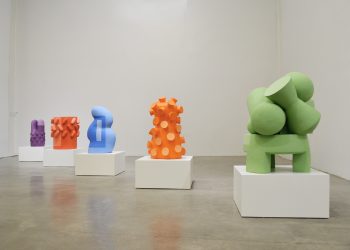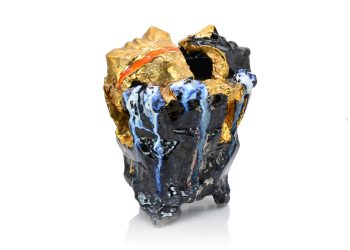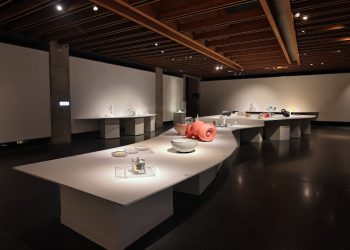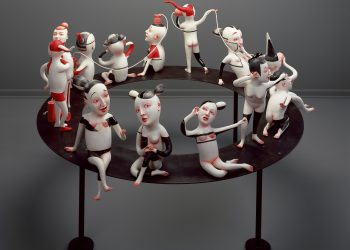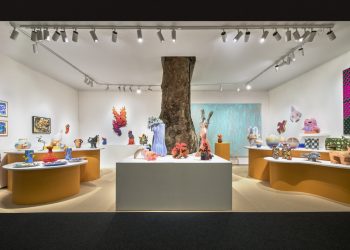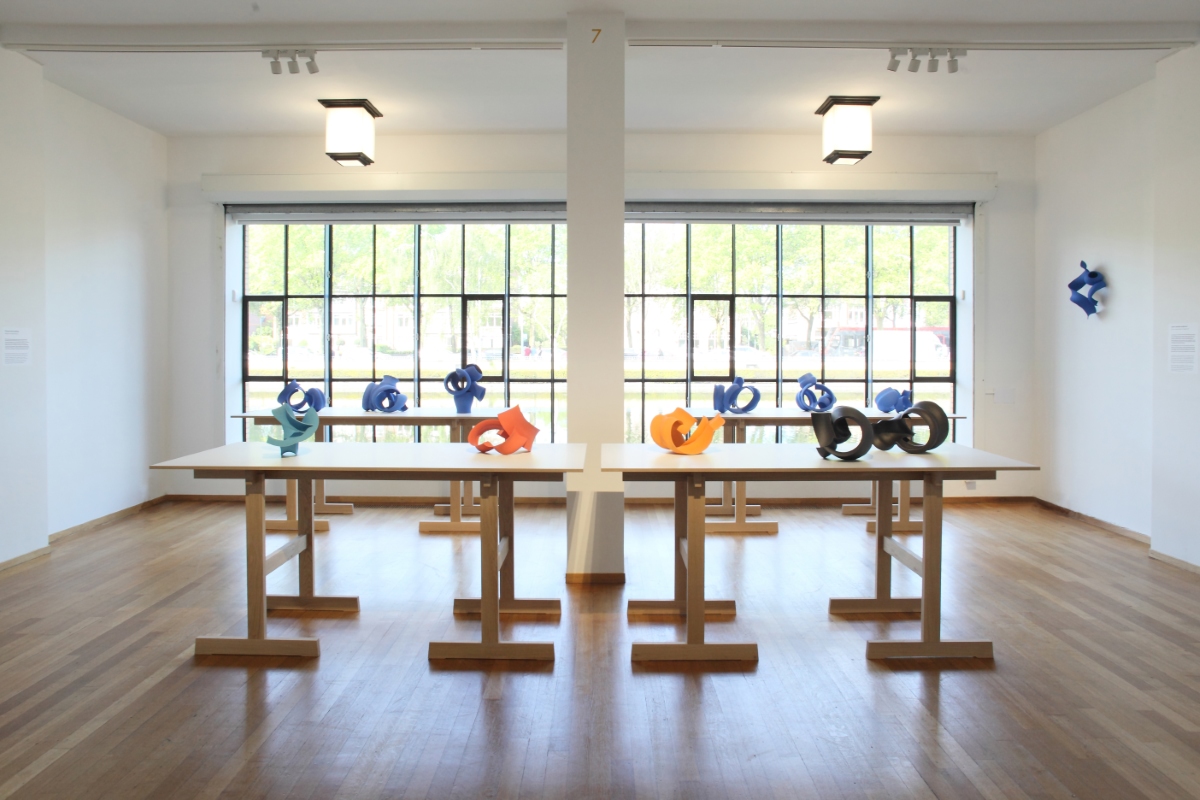
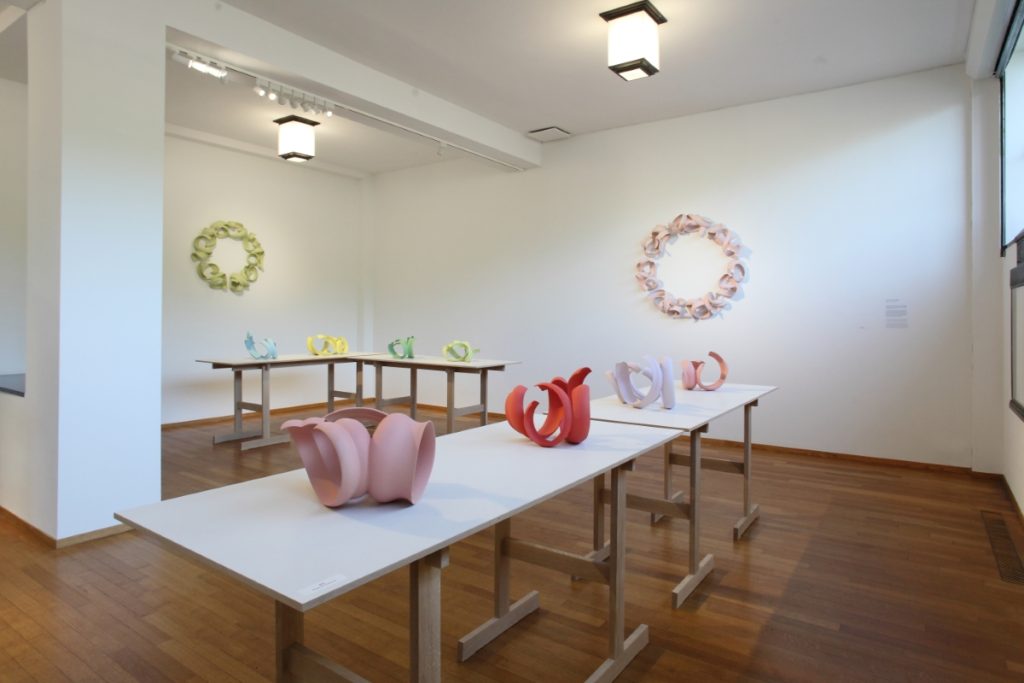
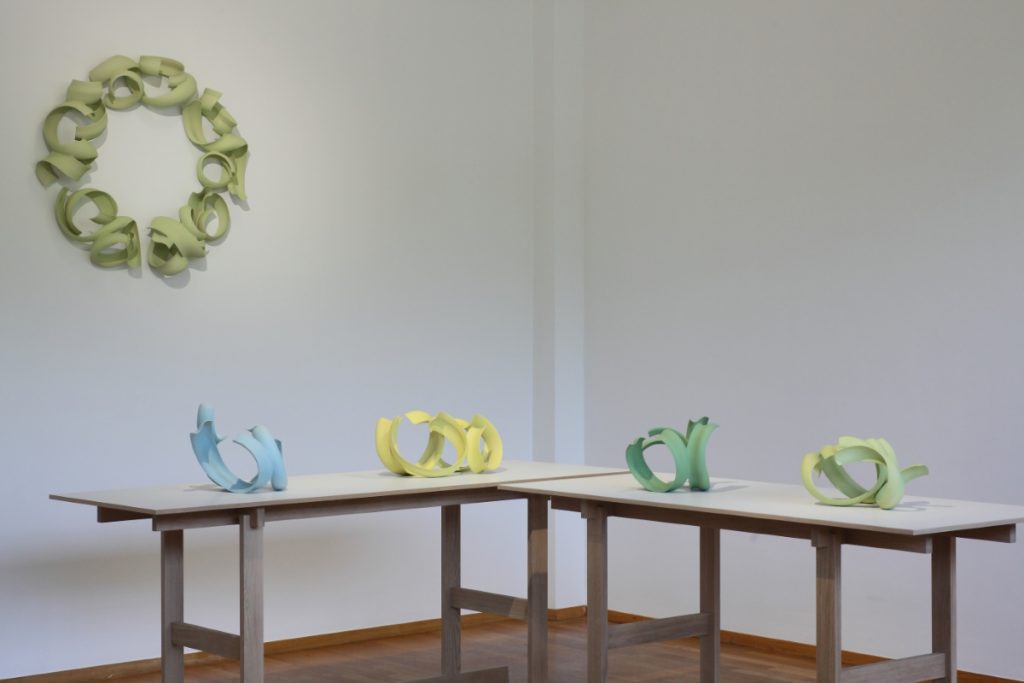
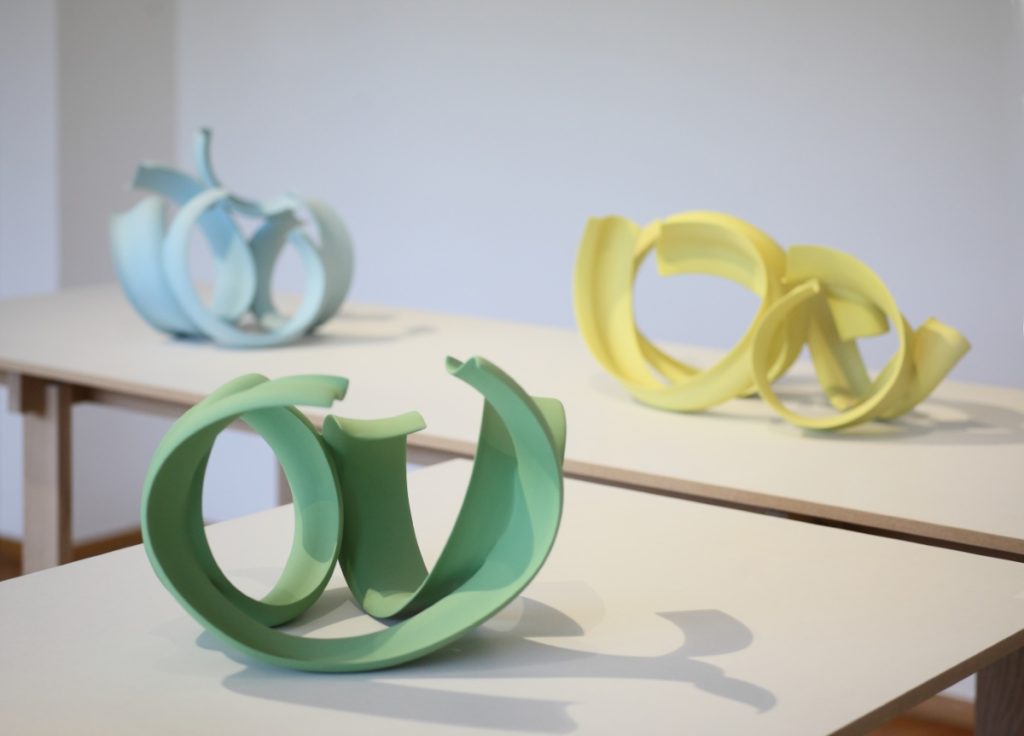
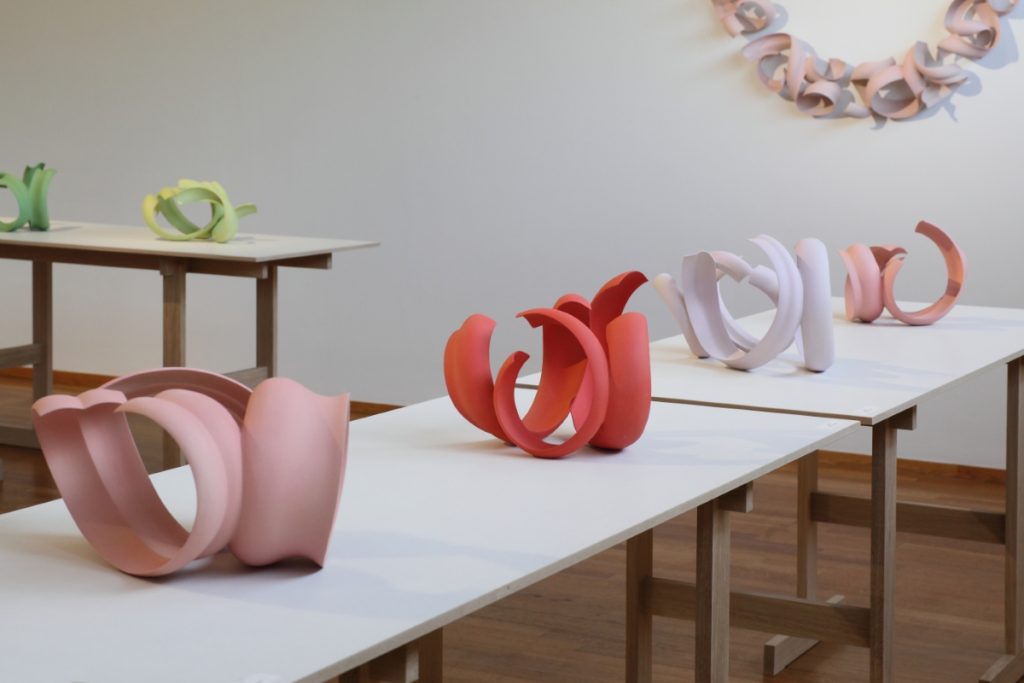
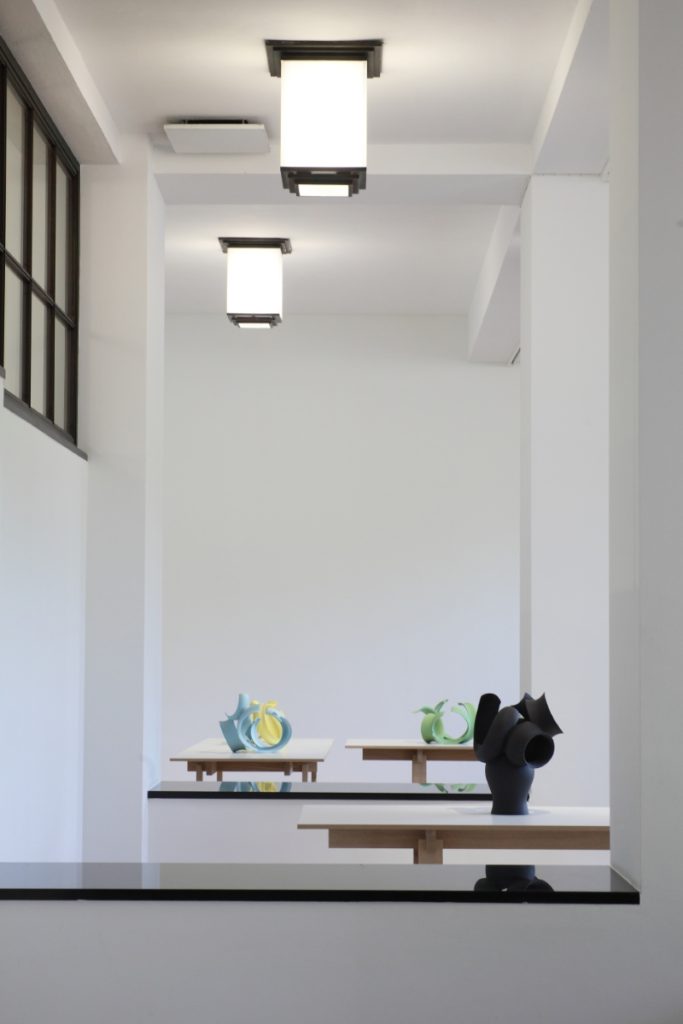
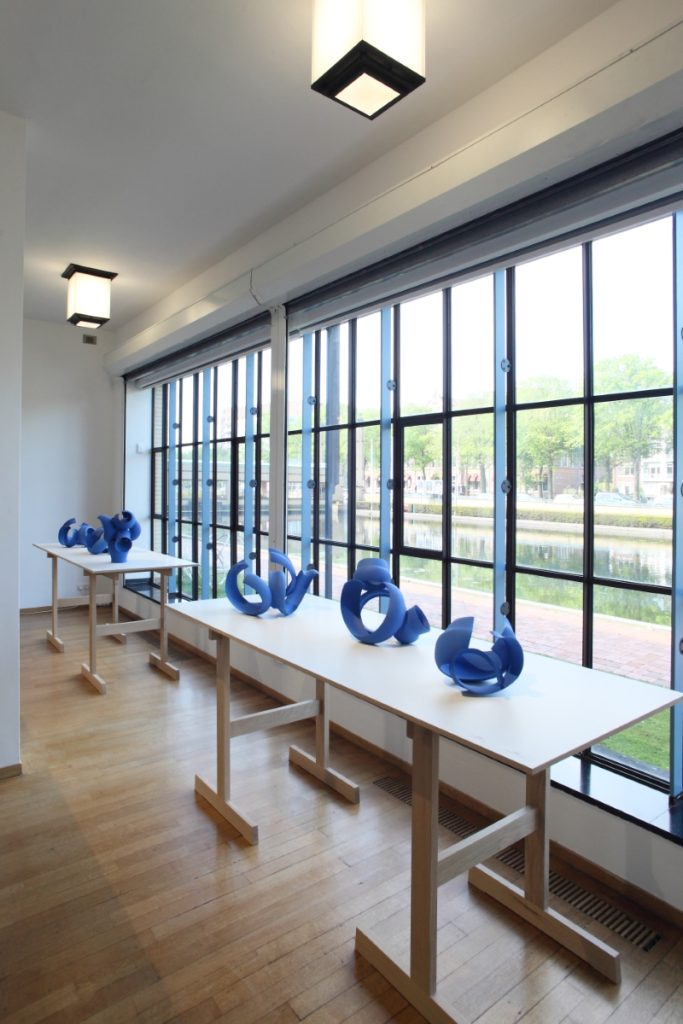
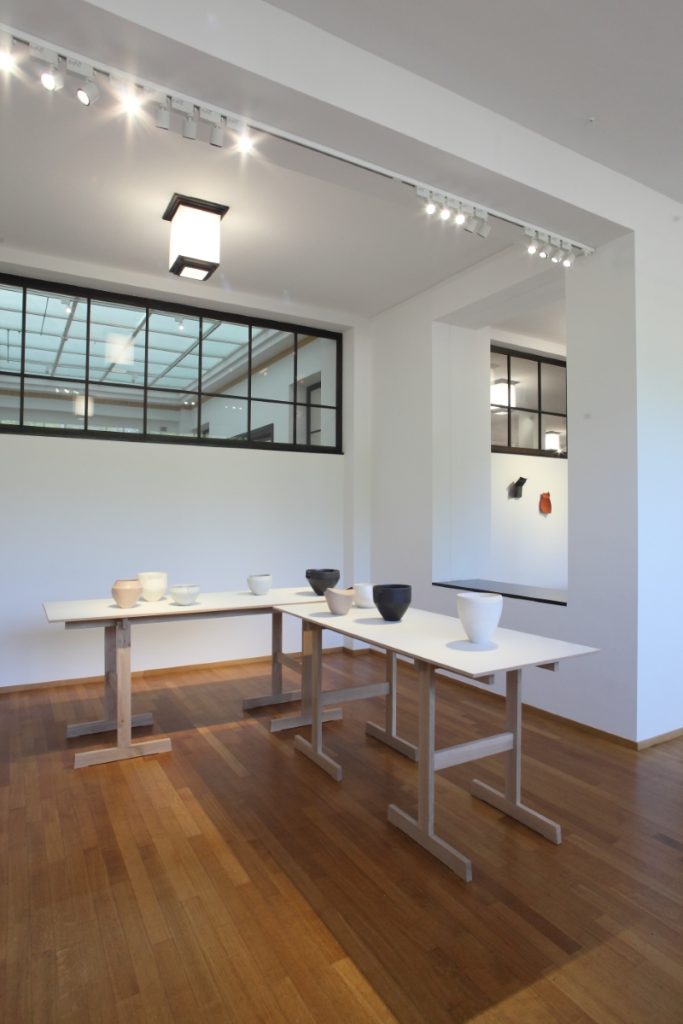
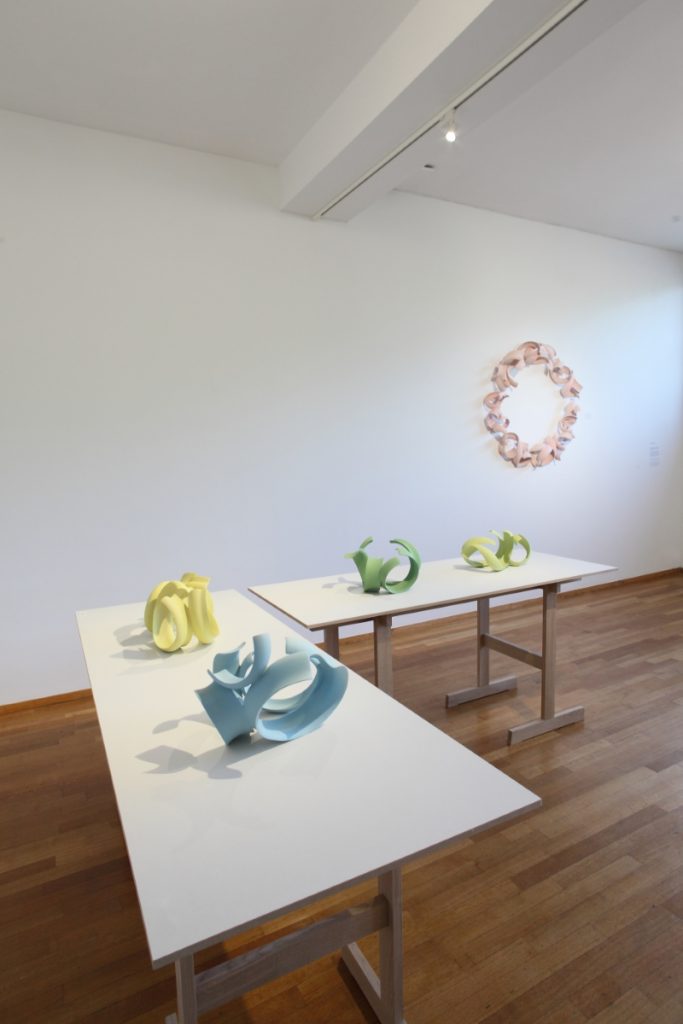
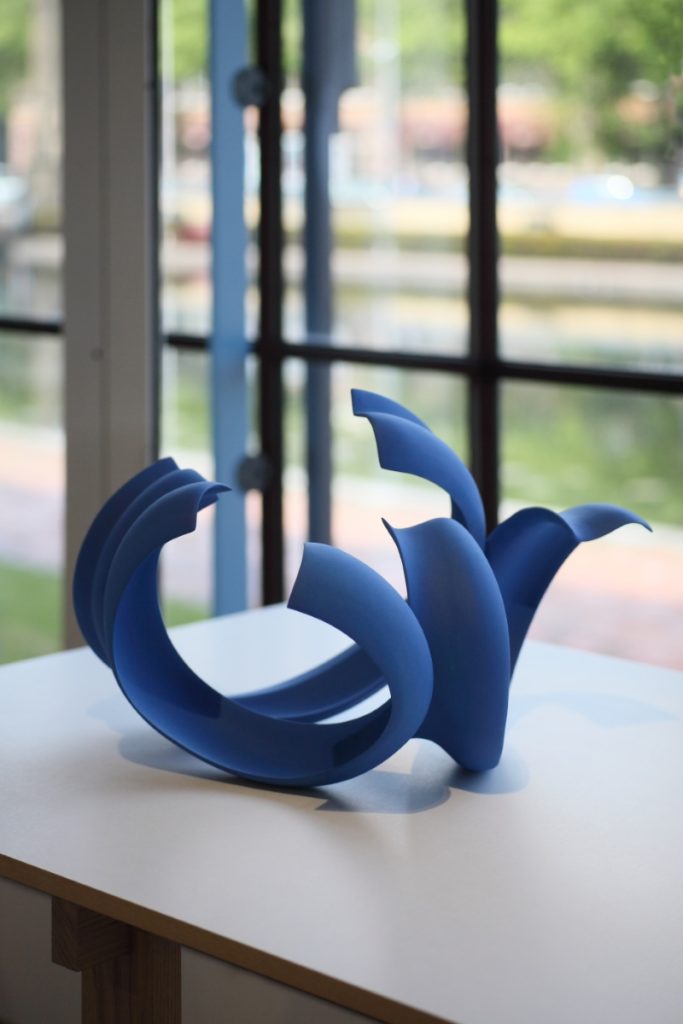
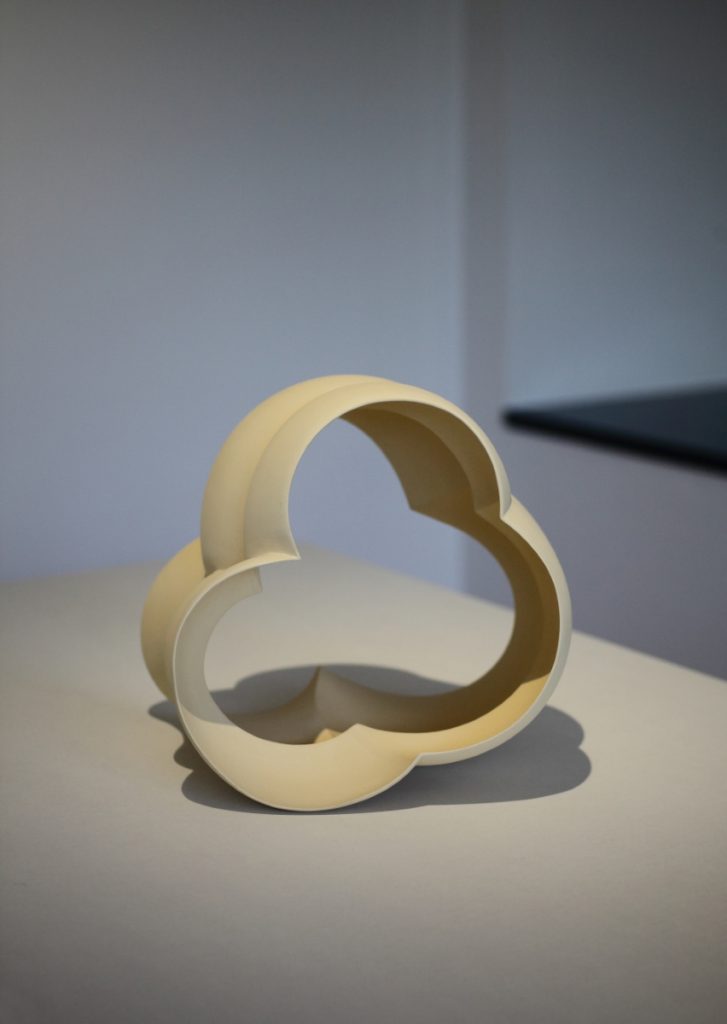
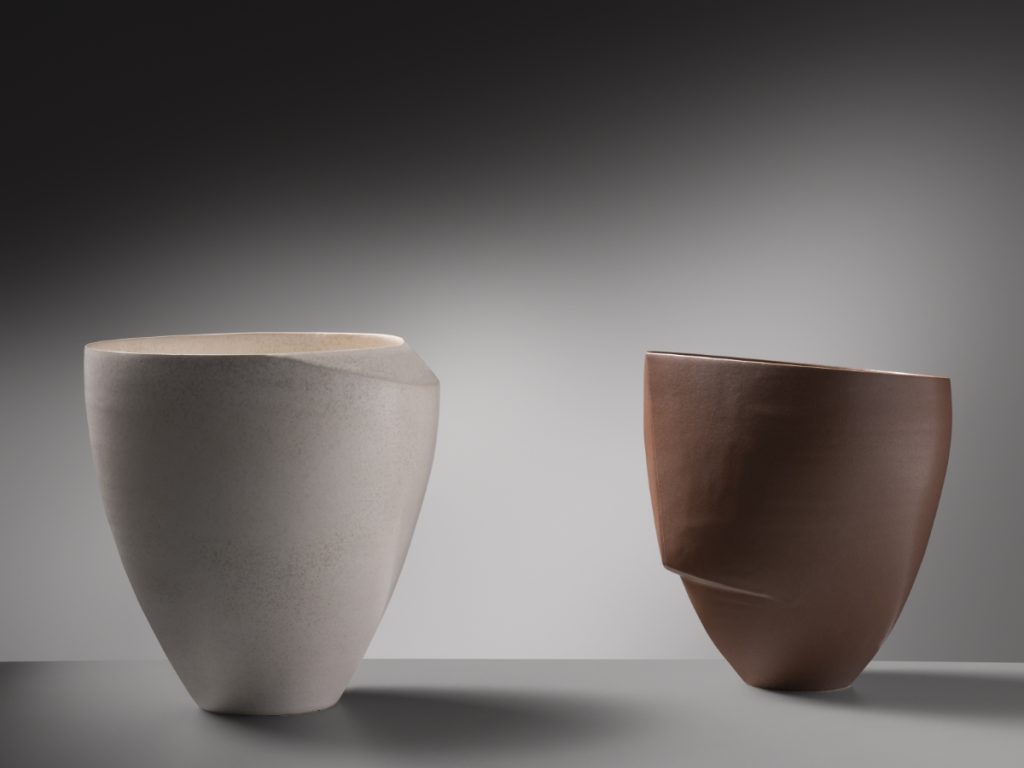
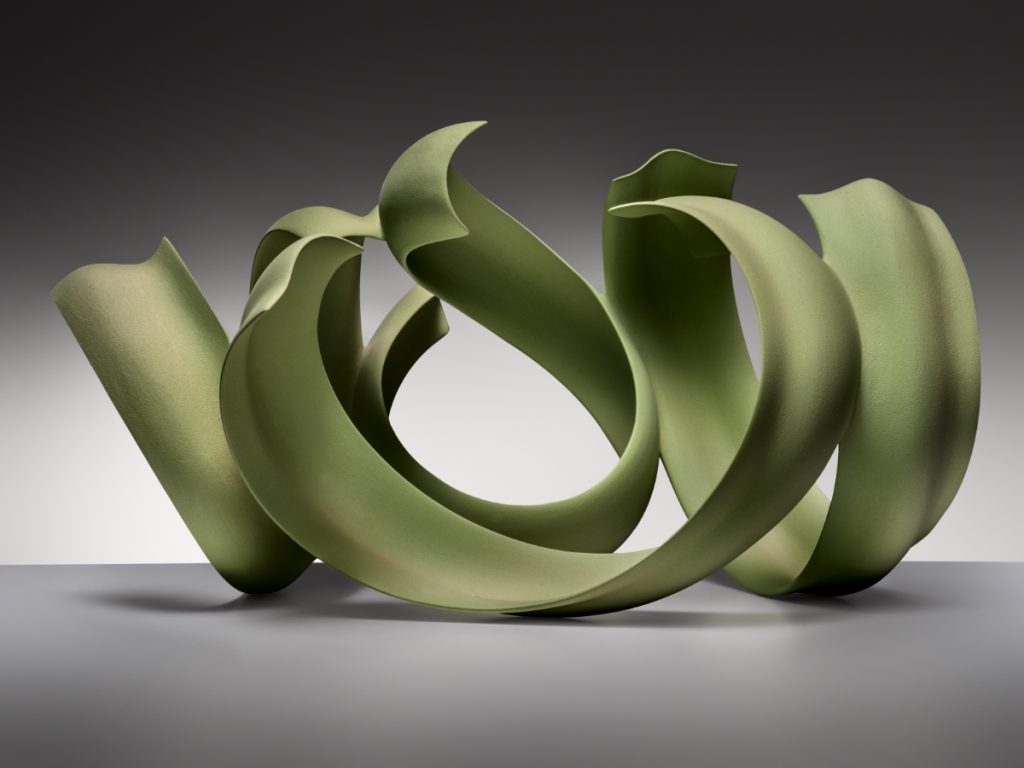
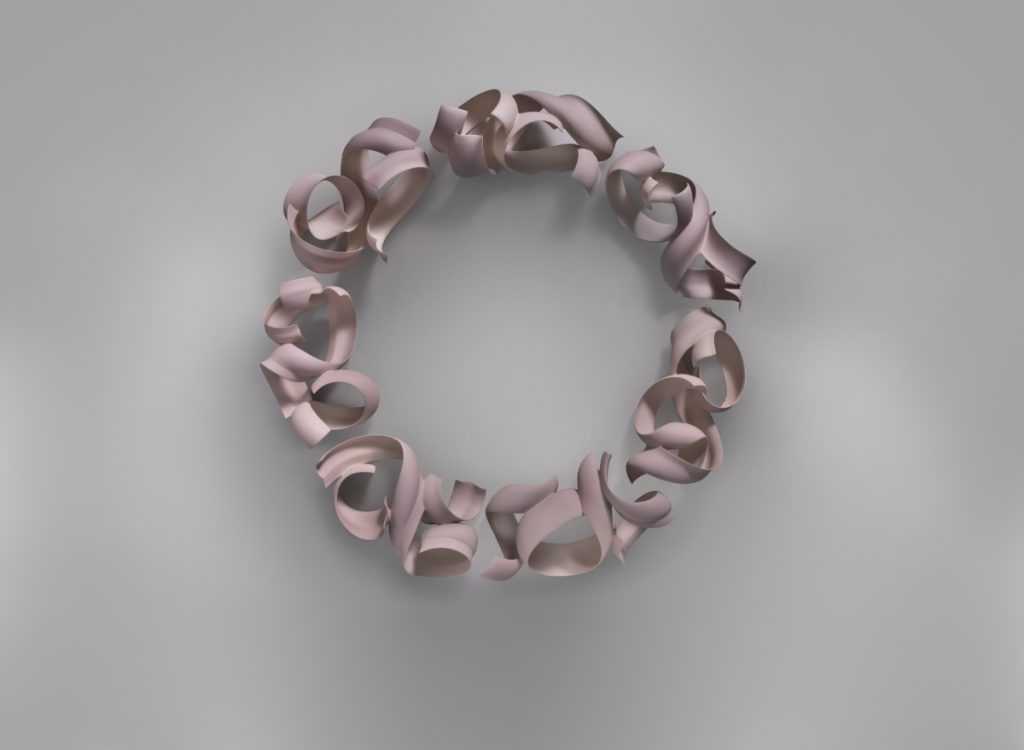
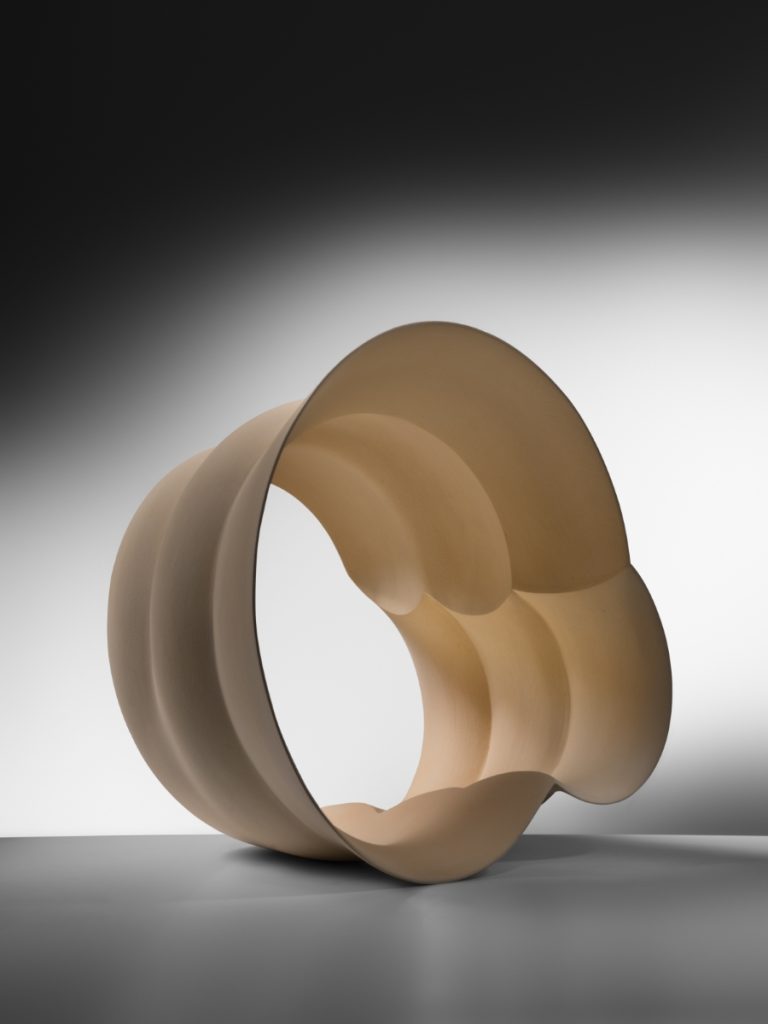
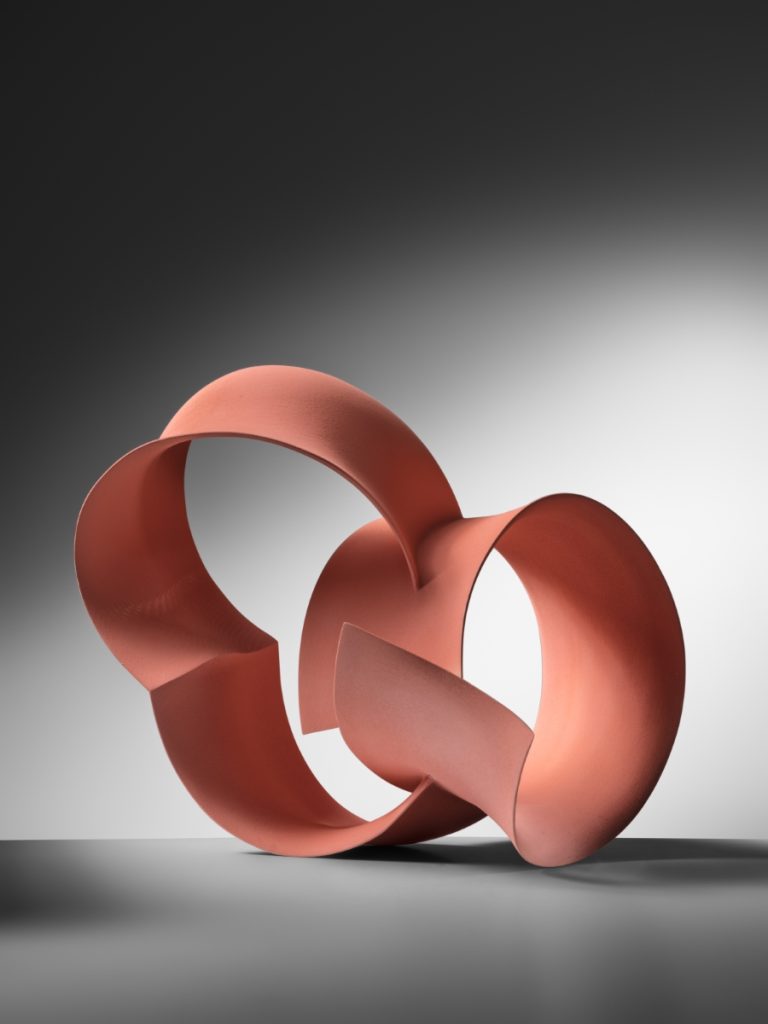
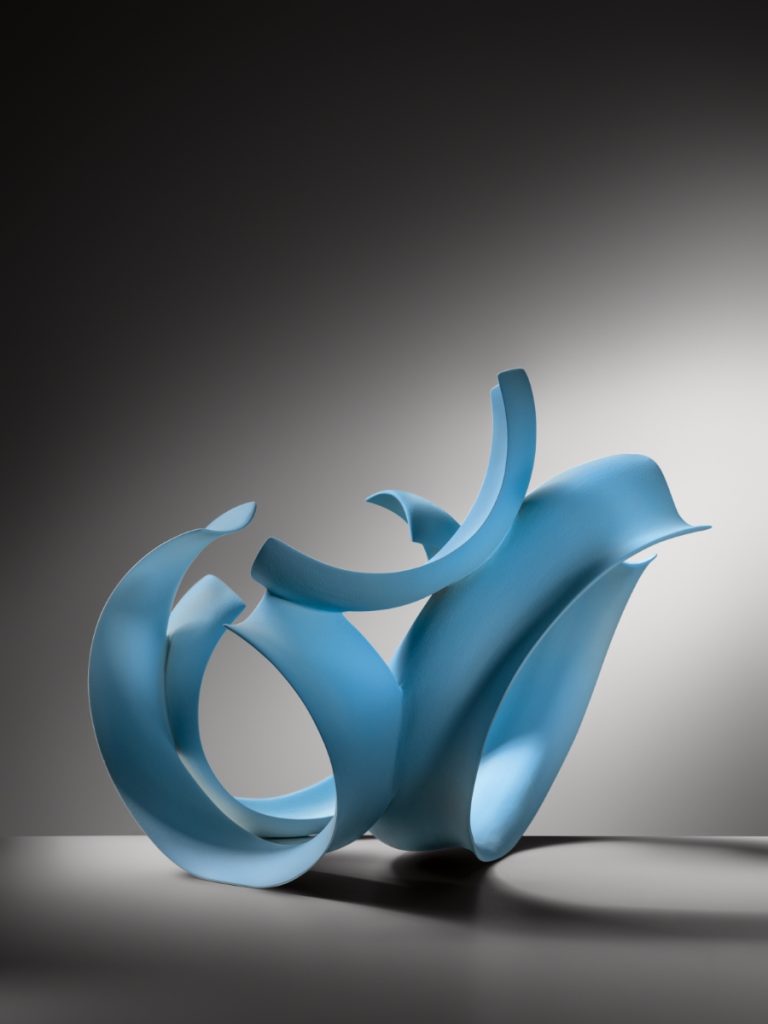
Wouter Dam is on view at Kunstmuseum Den Haag, The Hague
May 20 – October 29, 2023
Wouter Dam has been one of the leading ceramicists in the Netherlands for forty years. Dam, who graduated from the Gerrit Rietveld Academy in 1980, has always related to the tradition of studio pottery, while also distancing himself from it. Throughout his career, Dam has increasingly cut up and broken open his pot forms. In his most recent works, all that remains are fragile bands of clay that dance around each other in graceful compositions. The Kunstmuseum Den Haag presents the first retrospective survey of his impressive body of work.
Forms in Space
Wouter Dam initially made simple pot forms with subtle interventions that interrupted their traditional forms. His restrained pots gradually developed into more outspoken objects with indentations and incisions that created more volume. Dam is fascinated by how his objects take up space and by how space penetrates them. To make the interior of his pots play a larger role, Dam elongated them on one side, creating a kind of helmet shape.
Tilted Pots
In the early 1990s, he rounded off the base of his objects and laid them on one side. He thus bade farewell to the classic pot shape as a useful vessel and embraced the ceramic object as an autonomous sculpture. Another breakthrough followed – quite literally in – in 1998 when Dam decided to cut the ‘bottom’ out of his objects and open up the form further. This resulted in objects in which, in the right light, for the first time the interior demands more attention than the external form.
Form Becomes Sculpture
At the beginning of the new millennium, Dam opened up the wall of a cylindrical shape and allowed it to collide with another form placed at a right angle to it. Gently curved surfaces were thus interrupted with abrupt lines. Whereas his objects had previously seemed to consist of a single part, their appearance now made clear that they had been assembled. Almost simultaneously, Dam abandoned ‘form’ as a description of his objects in favour of ‘sculpture’.
Rapid Acceleration
With the step towards assembly, Dam’s career entered a period of rapid acceleration. Dam explored different compositions in which bands of clay dance around each other and subtly intersect. He compares the search for the right form with his love of baroque music: ‘What appeals to me are the repetitions and the subtle changes. Many variations are possible within a fixed theme or pattern. My pieces look alike, but it is precisely the surprise within that similarity that can create a wow effect.’
Human and Sensual
For Dam, it is important that his objects relate to the human scale and enter into a direct, intimate relationship with their viewer. The shape and finish also contribute to this: ‘It is important that both the form and the skin have a personal and sensual quality. It must be executed with technical perfection and it must look right but it should not be industrial. You have to feel that it is made by hand.’
Interplay of Form and Space
While Dam’s earlier works were about opening up volumes, his recent constructions are lighter than ever. The objects not only look light but are literally almost weightless: a large work weighs less than a kilo. To accentuate the delicate character of these works, Dam has executed them in soft pastel shades: from old rose to subtle shades of green. More dynamic than ever, these objects are nothing more than a sparkling interplay between form and space.
To coincide with the exhibition, WBOOKS published Wouter Dam | Keramiek Ceramics, with an essay by Jan de Bruijn and photos by Erik and Petra Hesmerg.
Contact
info@kunstmuseum.nl
Kunstmuseum Den Haag
Stadhouderslaan 41
2517 HV Den Haag
the Netherlands
Studio images by Erik & Petra Hesmerg




